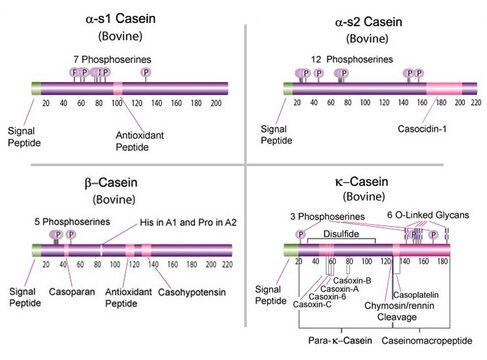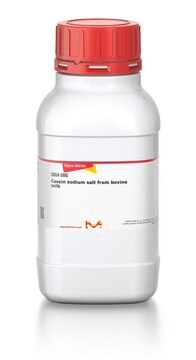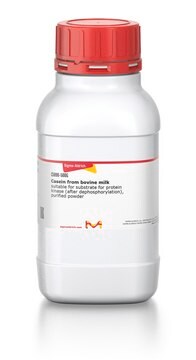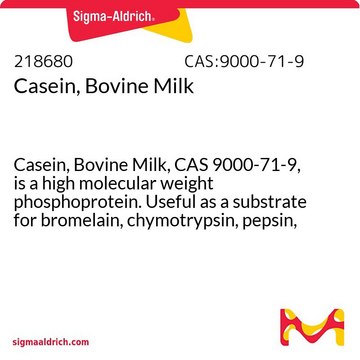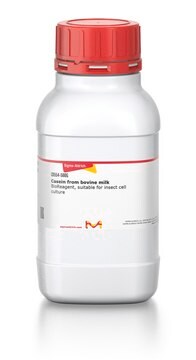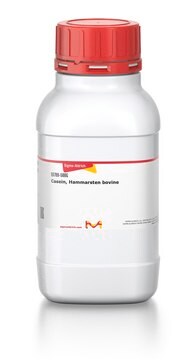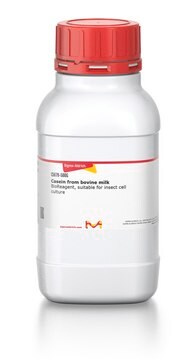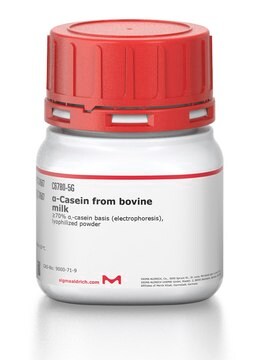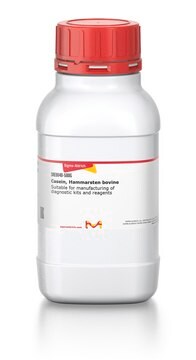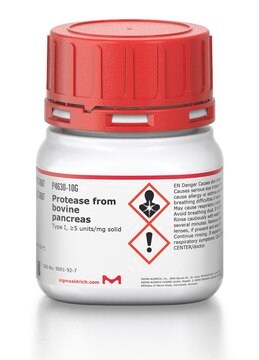Recommended Products
Product Name
Casein from bovine milk, technical grade
biological source
bovine milk
Quality Level
grade
technical grade
form
powder
technique(s)
activity assay: suitable
electrophoresis: suitable
immunocytochemistry: suitable
mp
280 °C (dec.) (lit.)
SMILES string
[P](=O)(OCC(NC(=O)C(NC(=O)C(N)Cc1ccccc1)CCC(=O)N)C(=O)NC(CCC(=O)O)C(=O)NC(CCC(=O)O)C(=O)NC(CCC(=O)N)C(=O)NC(CCC(=O)N)C(=O)NC(CCC(=O)N)C(=O)NC(C(O)C)C(=O)NC(CCC(=O)O)C(=O)NC(CC(=O)O)C(=O)NC(CCC(=O)O)C(=O)NC(CC(C)C)C(=O)NC(CCC(=O)N)C(=O)NC(CC(=O)O)C(=O)NC(C
InChI
1S/C81H125N22O39P/c1-36(2)31-50(76(132)94-43(15-24-57(87)108)71(127)101-52(34-64(120)121)78(134)98-49(81(137)138)11-7-8-30-82)99-72(128)47(19-28-61(114)115)95-77(133)51(33-63(118)119)100-73(129)48(20-29-62(116)117)97-80(136)65(37(3)104)103-75(131)44(16-25-58(88)109)92-68(124)42(14-23-56(86)107)90-67(123)41(13-22-55(85)106)91-69(125)45(17-26-59(110)111)93-70(126)46(18-27-60(112)113)96-79(135)53(35-142-143(139,140)141)102-74(130)40(12-21-54(84)105)89-66(122)39(83)32-38-9-5-4-6-10-38/h4-6,9-10,36-37,39-53,65,104H,7-8,11-35,82-83H2,1-3H3,(H2,84,105)(H2,85,106)(H2,86,107)(H2,87,108)(H2,88,109)(H,89,122)(H,90,123)(H,91,125)(H,92,124)(H,93,126)(H,94,132)(H,95,133)(H,96,135)(H,97,136)(H,98,134)(H,99,128)(H,100,129)(H,101,127)(H,102,130)(H,103,131)(H,110,111)(H,112,113)(H,114,115)(H,116,117)(H,118,119)(H,120,121)(H,137,138)(H2,139,140,141)
InChI key
BECPQYXYKAMYBN-UHFFFAOYSA-N
Gene Information
bovine ... CSN1S1(282208) , CSN1S2(282209) , CSN2(281099)
Looking for similar products? Visit Product Comparison Guide
General description
Application
- a blocking agent in immunochemistry
- a substrate to determine the casinolytic activity in disintegrin and Cerastes cerastes venom
- as a fining agent to test its effect on white wine protein stabilization
Biochem/physiol Actions
Other Notes
Storage Class
11 - Combustible Solids
wgk_germany
WGK 1
ppe
Eyeshields, Gloves, type N95 (US)
Choose from one of the most recent versions:
Already Own This Product?
Find documentation for the products that you have recently purchased in the Document Library.
Customers Also Viewed
Protocols
Our General Protease Assay Procedures and Substrates overview.
Proteases break peptide bonds. In the lab, it is often necessary to measure and/or compare the activity of proteases. Sigma's non-specific protease activity assay may be used as a standardized procedure to determine the activity of proteases, which is what we do during our quality control procedures.
Measure and compare the activity of proteases with this non-specific protease activity assay using casein. Use this assay as a standardized procedure to determine the activity of proteases for quality control.
This procedure may be used for all Ficin products.
Our team of scientists has experience in all areas of research including Life Science, Material Science, Chemical Synthesis, Chromatography, Analytical and many others.
Contact Technical Service